The aromas of the nixtamal cooking brings back many wonderful memories. Memories of my dad, Ramiro, working in his garage all day building his commercial tortilla machinery. Not only did he quit school in the 6th grade, but had no real schooling after that. He, like many, left his wife and young family in Mexico to seek the American dream in the United States. I still remember all of his stories of his adventures growing up in Mexico. His idols were Pedro Infante and Javier Solis. The excitement in his voice hearing him tell of the time when he was a young boy and saw his idol, Pedro Infante, through a wire fence at the airport! I can only imagine how happy he felt at that moment!
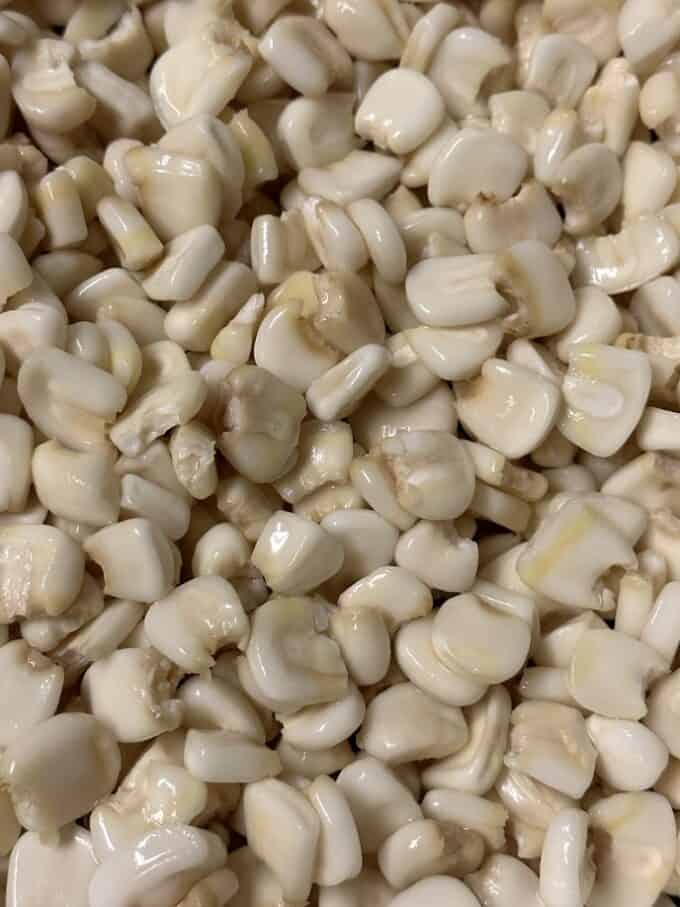
Preparing Nixtamal From Scratched Is NOT For Everyone! LOL!
Maiz cachuazintle (cacahuacintle) comes from two nahuatl words, cacahuatl and centli, meaning corn and cacao because of it’s size mostly. The giant kernels are whiter, softer and thicker than regular white or yellow corn. Maiz cacahuazintle is also maiz pozolero, mote, giant corn and hominy. Recently I posted a quick video tutorial on how I prepared the maiz blanco on social media. A few comments stated “That’s way too much work!”, “Just buy a can of hominy!” My response, no way, lol! Of course I will purchase hominy out a can when I have no other choice. I enjoy it! But, I am my father’s daughter and I need that little challenge once in a while. It’s very rewarding in the end when you are sitting, enjoying that meal that came from your hands. Yes! These days, many Hispanic markets carry the already prepared maiz and all you have to do is cook it. It even comes without the tips or las puntas!
If I Had Known How Important Mexican Food Would Change My Life, I Would Have….
If I had known as a teenager how important Mexican food would influence my future career as a blogger, I would have paid more attention. I think of all the food memories I have floating around in my head and how I wish I had pictures of all the cooking, the prep, the dishes! The blog allows me a space where I can share those food memories and it’s like therapy. On any given day, dad would be welding and testing his tortilla machinery. He would go in depth about the process of preparing tortillas from scratch, the nixtamalization, grinding of the corn and how the machinery cut and cooked the tortillas. Did you know that tortillas have a front and back side? You could see the pride in my dad’s face and hear it in his voice how passionate he was about what he did. My thing is that I feel that in this instant pot, air fryer world that we live in, people will forget how to do things traditionally. Not saying I don’t like using those appliances because they are convenient and fast. But, in the end, I am old school all the way and prefer roasting my chile poblano on a comal and steaming my tamales in the tamalera. Why are we in such a hurry to miss out on some of the most wonderful food memories we will become nostalgic about later in life?
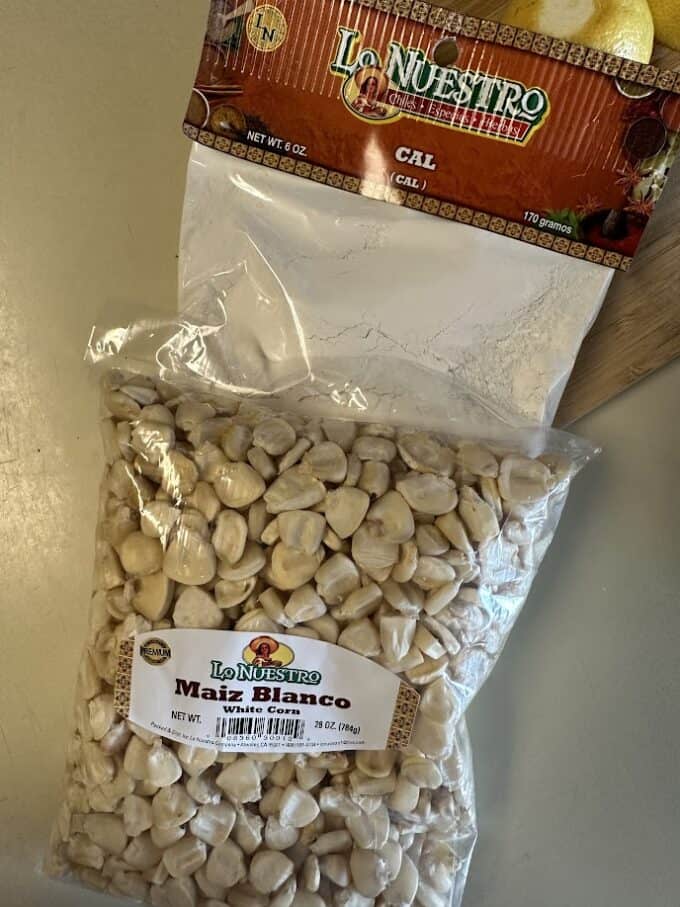
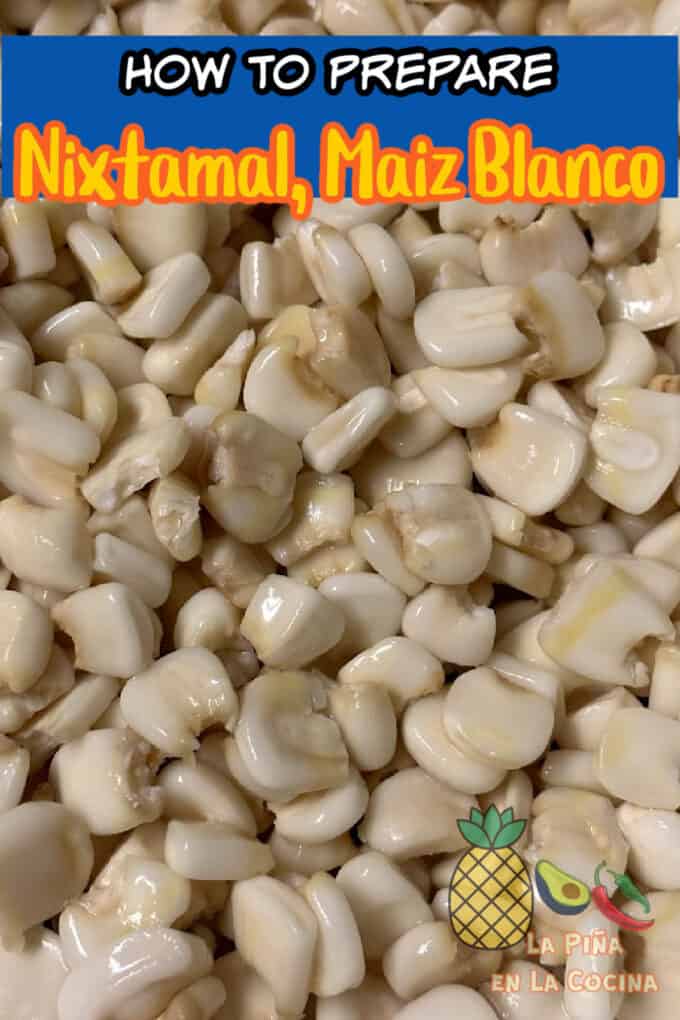
I Cannot Stress This Enough! Write It Down! Document It!
There were no written recipes growing up with mom’s cooking. Heck, dad cooked too! And delicious, by the way! I still remember asking mom to share here flour tortilla recipe with me. Five pound bag of flour? What? There’s only two of us, lol! I eventually figured it out after trial and error and lots of testing to reduce the recipe to 3 cups of flour. The nixtamal was mostly reserved for dad’s testing of his big stainless steel tanks that he would later sell to large tortilla factories. Document the recipes in a note, in a video, anything! I am very happy that dad’s influence helped me through the process of nixtamalization. He would be so proud!

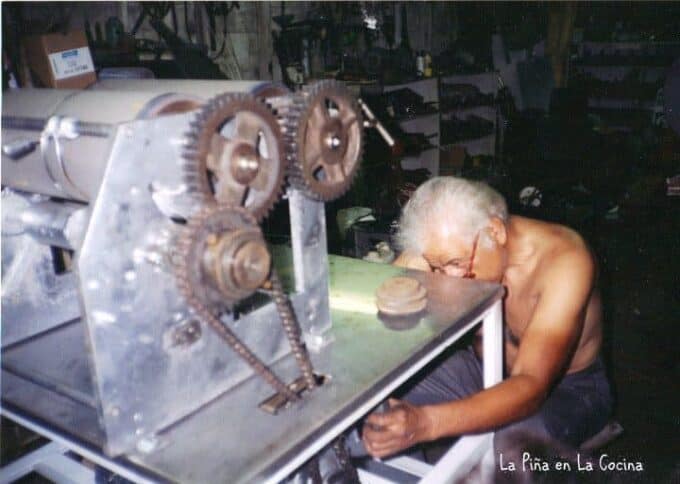
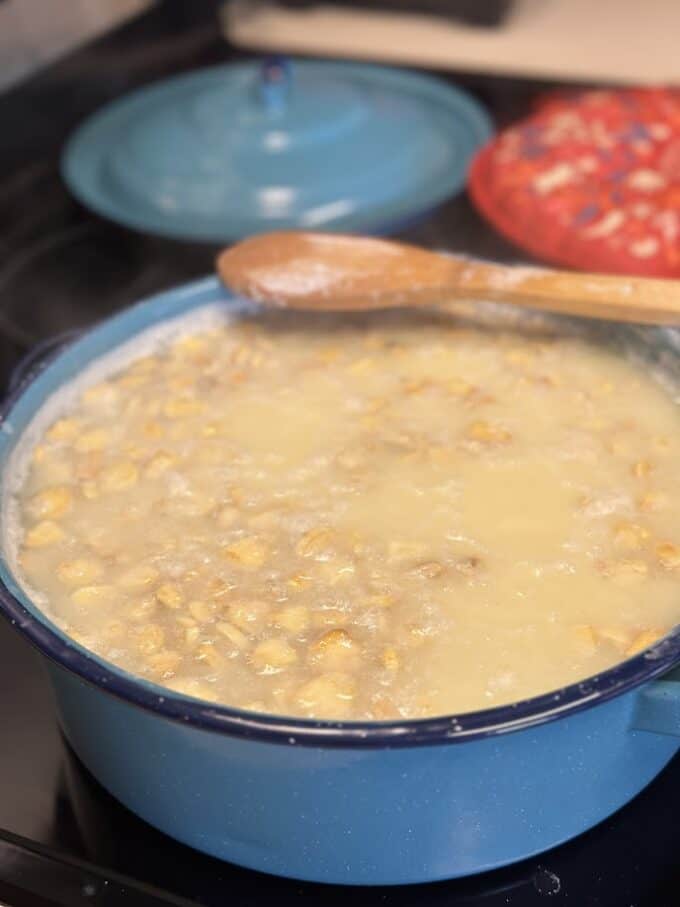
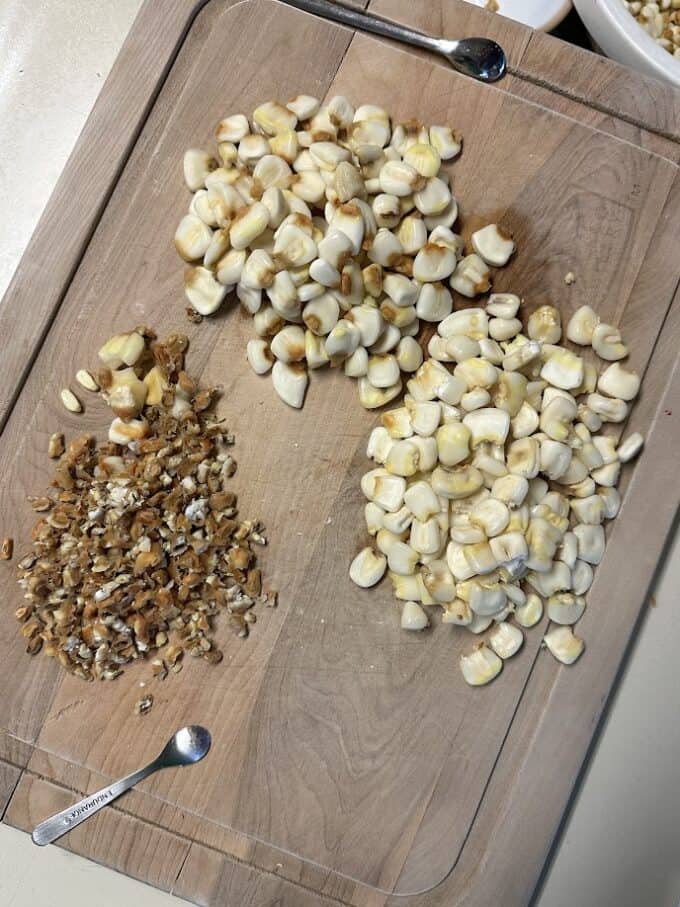
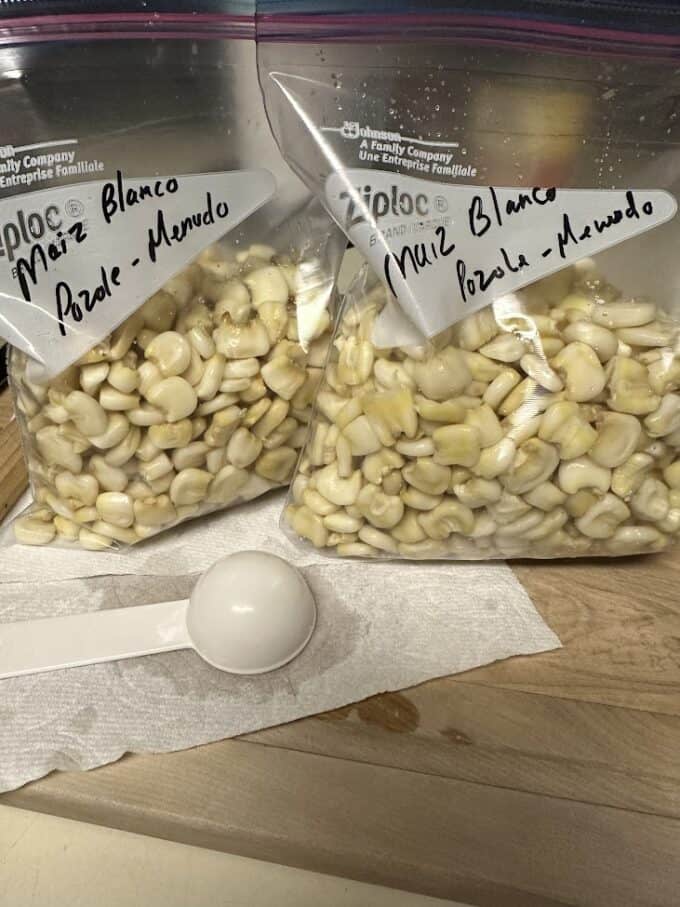
My Favorite Way To Enjoy This Nixtamal Is In Pozole And Menudo! Although It Really Is Delicious In All Kinds Of Stews And Soups!
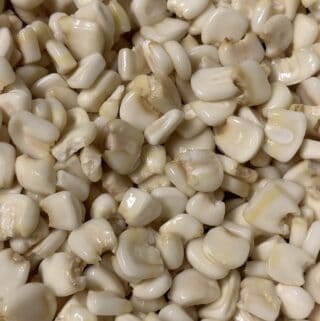
How To Prepare Nixtamal, Maiz Blanco
Equipment
- large pot
- Colander
- Lots of patience!! Lol!
- small metal spoon for removing tips
Ingredients
- 28 oz Dried Maiz Blanco
- 5 tbsp cal, lime, calcium Hydroxide powder
- 7-8 liters Water
Instructions
- Transfer dried maiz(corn) to a large bowl. Cover with water 2 liters of water. Stir and let sit for a few minutes. With a slotted spoon or your hands, remove all the pieces that float to the top and discard those. Let sit for 5 minutes.
- In a large pot at medium heat, pour in three liters of water. Mix in five tablespoons of cal. Stir well to combine. It should taste sour. If it doesn't, mix in a little more cal(lime).
- Drain the water from the maiz in the bowl, then transfer to the pot on the stove with the cal. Stir gently. Bring up to a boil. This may take 25-30 minutes. Stir now and then.
- Once it comes up to a boil, reduce the heat slightly. The maiz will turn a yellow color and it will begin to float to the top. Some of the husks(skins) will start to fall away. Continue cooking at a light simmer for another 30 minutes.
- Remove from heat and let sit for 1 hour or overnight.
- When ready, drain the maiz into a colander in the sink. Under room temperature running water, use your hands to vigorously wash the maiz to remove any remaining skins. Once it looks clean, you can leave it as is, or you can remove the tips. Using your fingers or the metal spoon, cut tips away from all the maiz! I know! A labor of love for sure!
- After that step, you will need a break for sure, lol! At this point you want to cover the maiz with 2 liters of water and mix in 1 tablespoon of baking soda. Stir well and let sit for one hour. This process will whiten the maiz a little more. It is optional.
- Drain maiz after one hour and rinse well under cool water. At this point you can package maiz in freezer bags and store frozen until you are ready to use it for pozole or menudo.
I was so excited to see this in my email today, since it’s something I’ve been wanting to try for awhile! i have also been wanting to grind and make my own masa harina for tortillas! is this the process you would use to do that as well? have you ever done it yourself? so curious! thanks!
Hi Rebecca! Thanks for stopping by! The corn for preparing the masa or masa harina flour is smaller field corn in white or yellow, but it’s the exact same process. I have prepared the masa in the past, but not the harina. Next time I would like to try that. Check Masienda online for the corn if you cannot find it local.
I really enjoyed this column. I’ve been wanting to know the nixtamalization process forever…thank you Sonia.
Hi Carmen! Thank you for stopping by! I am so happy you liked the post!
Gracias por compartir esta valiosa receta, Sonia, saludos!
Gracias Chef por comentar en esta receta de nixtamal! Es muy importante seguir con nuestras tradiciones!
Gracias Sonia,
I have tried nixtamal a few times and it is daunting. I am mostly satisfied with my mote for posole but I just can’t quite iron out a masa for tortillas.
Thanks for the inspiration to try again
Stephen
Hi Stephen! I have only tried my hand at the masa for tortillas twice. Because I didn’t have the traditional grinder, I used my food processor and then my power blender. I could not get the texture I wanted from the processor, so I transferred it to the vitamix blender. With the blender, I could not get it to blend unless I added more water. In the end, I finished by mixing in a little nixtamasa masa harina to get it just right. I did enjoy the tortillas though.
I think I need to just keep it simple for now and use up this stock of NYS yellow field corn for hominy.
Sounds good!